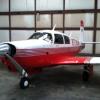How Long Will the Engine Run with Fuel Selector OFF
-
Members Online
- Sabremech
- TCC
- NickG
- Scooter
- BrianL29
- MikeOH
- Schllc
- aviatoreb
- sdmideas
- exM20K
- Bug
- eman1200
- 00-Negative
- DXB
- A64Pilot
- Matthew P
- Justin Schmidt
- Jakes Simmons
- Deb
- Culver LFA
- PT20J
- Fabrice
- Vance Harral
- CCAS
- Danb
- warren.huisman
- Todd1
- DCarlton
- N204TA
- LANCECASPER
- Mikey30V
- Speed Merchant
- Marc_B
- Brian2034
- cbarry
- Daved
- Bkohler
- 47U
- pirate
- Kyle


Recommended Posts
Join the conversation
You can post now and register later. If you have an account, sign in now to post with your account.